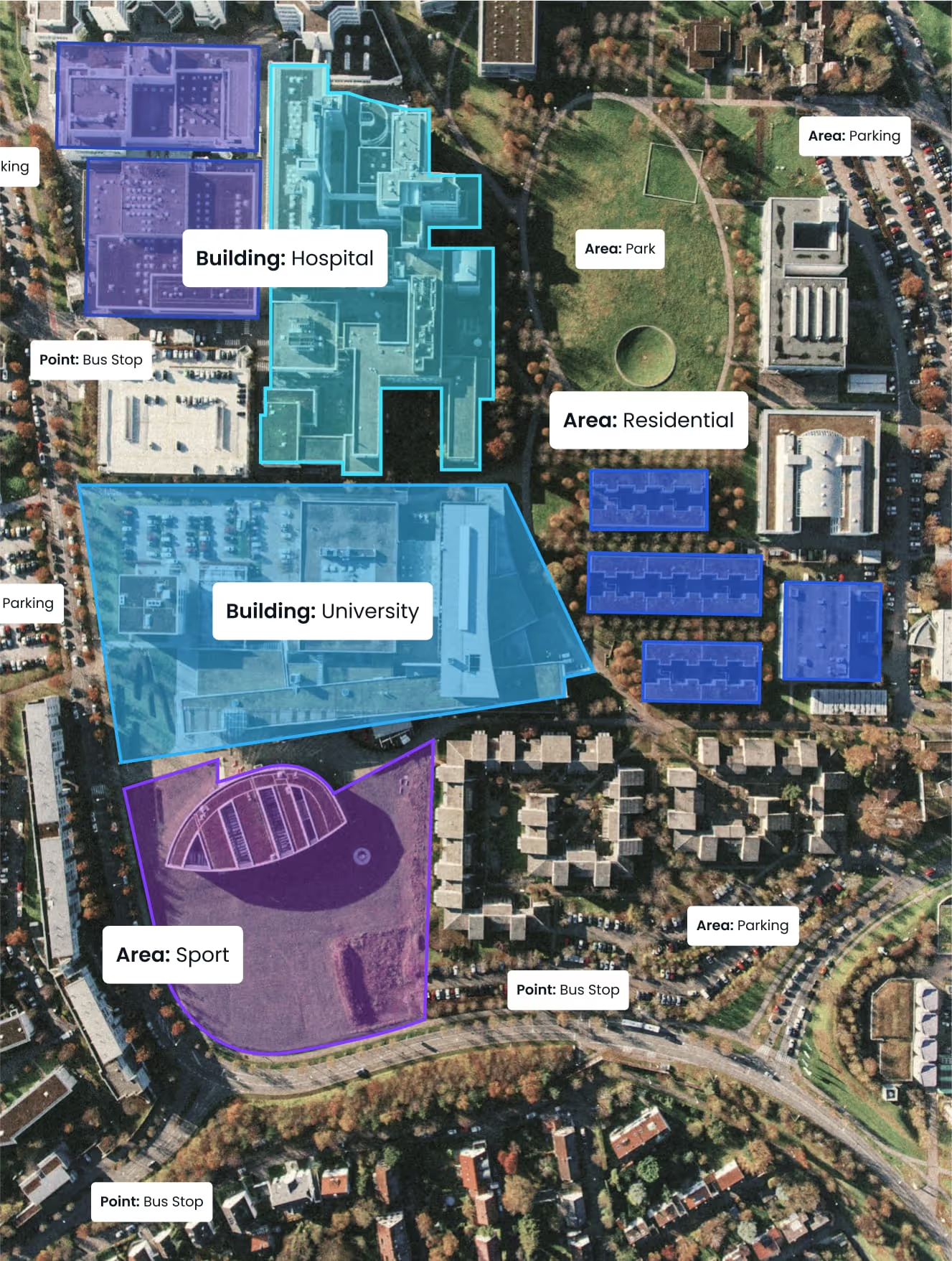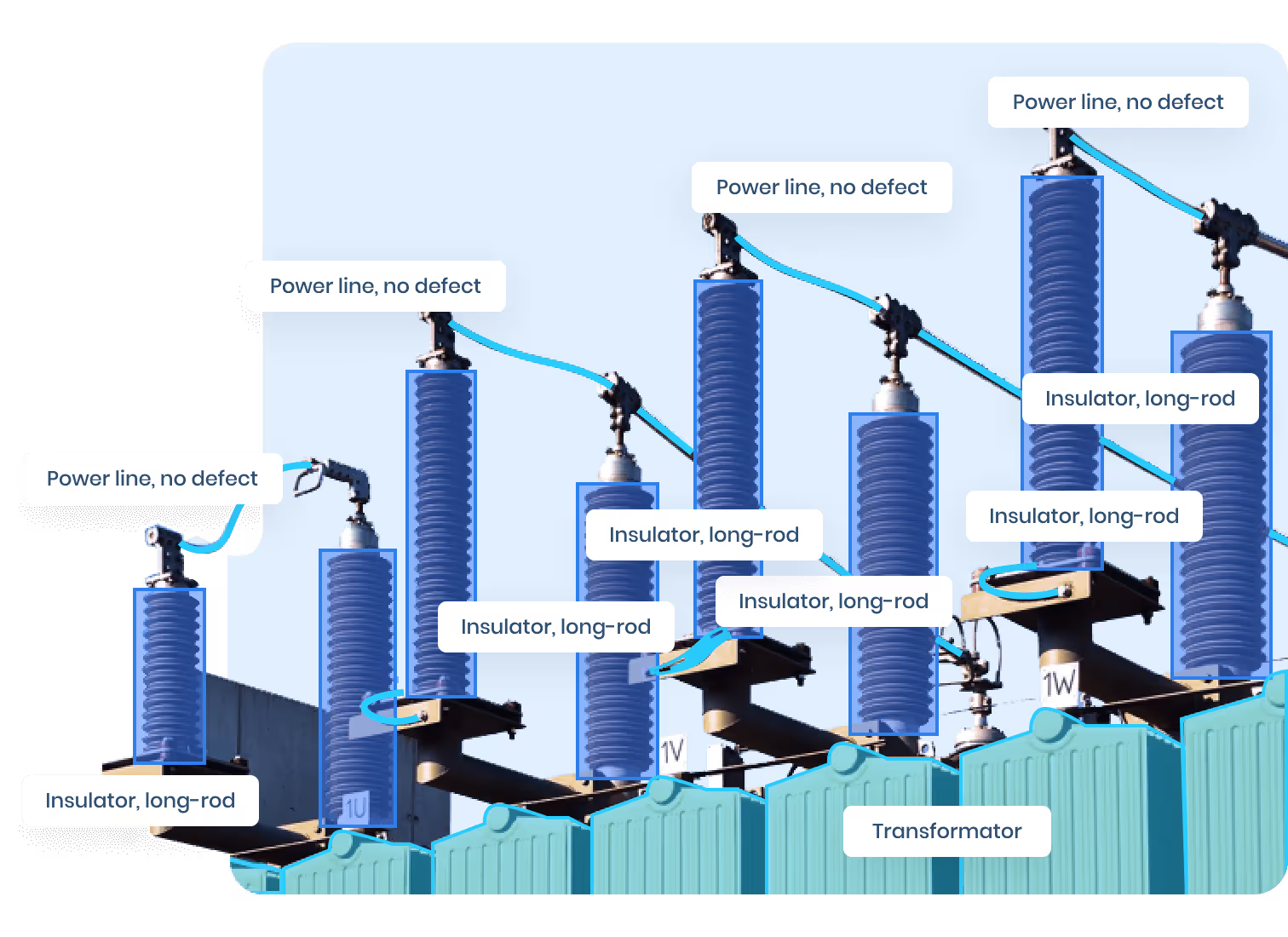AI Is Reshaping In-Store Shopping in the U.S. 🛍️
As e-commerce continues to dominate personalized marketing, brick-and-mortar Retailers in the U.S. are racing to catch up. But instead of trying to replicate online algorithms, they're unlocking new capabilities using retail AI built on annotated retail footage. These AI systems rely on vast libraries of labeled video to understand how customers move, interact, and shop in physical environments.
By applying customer behavior annotation to footage from in-store cameras, retailers can uncover patterns that were previously invisible. They can now answer questions like:
- Where do customers stop most frequently?
- Which products are touched but not purchased?
- What paths do shoppers take depending on time of day?
And these insights are fueling highly effective in-store analytics that power real-time decisions—everything from staff deployment to inventory rotation.
Annotated Video: The Data Backbone of Retail AI
Retail cameras were once used solely for security. But now, those same video feeds are driving advanced AI models that support personalization, safety, layout design, and sales optimization.
Here’s how annotated video data enhances retail AI applications:
- Customer movement tracking: Pinpointing the paths taken throughout a store.
- Gesture and dwell time monitoring: Understanding how long someone spends looking at a display or picking up a product.
- Product interaction logs: Measuring interest and hesitation based on physical behavior.
- Heatmap generation: Highlighting high-traffic or underperforming areas using visual movement data.
- Planogram enforcement: Ensuring product arrangements match strategic layouts.
By feeding AI with customer behavior annotation, retailers generate predictive insights that improve not just operations—but customer satisfaction too.
Leading U.S. Retailers Using AI for Personalization
From coast to coast, major retail brands and fast-moving startups are pioneering retail AI solutions built on annotated data. These projects aren't just proof-of-concepts—they're transforming how stores operate.
Walmart’s Intelligent Retail Lab uses ceiling-mounted cameras and real-time in-store analytics to monitor inventory levels and send instant alerts to staff. The system tracks product movements and shopper behaviors to reduce out-of-stocks and optimize store layout.
Target has tested visual AI systems that flag when assistance may be needed in an aisle, sending team members proactively. This reduces friction and boosts customer experience.
Meanwhile, companies like Zippin and Standard AI are using customer behavior annotation to power autonomous stores where shoppers check in, grab what they need, and walk out—no lines, no cashiers.
Understanding the Retail AI Workflow
Creating AI that responds to shoppers in real time isn’t magic—it’s data science. The core of every system is a continuous loop of annotated footage, model training, and in-store analytics.
The process typically looks like this:
- Video Capture: Cameras in stores gather thousands of hours of customer movement and interactions.
- Customer Behavior Annotation: Teams (often using both human and AI tools) label key actions—walking, stopping, reaching, picking up items, queueing, etc.
- Model Training: Retail AI models learn from these annotations, identifying patterns across different contexts and demographics.
- Deployment: Once trained, these models run live in stores, interpreting current footage and sending alerts or recommendations.
- Analysis & Action: Data from these insights feed into dashboards and business systems, enabling immediate action or long-term planning.
This loop enables true real-time personalization without ever needing to ask the customer for input.
Understand in-store behavior with E-commerce Annotation that maps foot traffic, gestures, and product interactions.
Personalization That Feels Seamless
Some of the best applications of Retail AI are completely invisible to shoppers. Instead of flashy digital screens, it’s the subtle adjustments—like smarter layouts, cleaner displays, or more available staff—that shape a personalized experience.
Here’s what that can look like:
- Adaptive product placement: Adjusting which products are featured based on in-store behavior patterns.
- Smart replenishment: Refilling popular items before shelves are empty using predictive in-store analytics.
- Responsive staffing: Dispatching associates based on dwell time data that suggests when a customer may need help.
- Mood-aware environments: Adjusting lighting or music depending on demographics or foot traffic trends during specific hours.
The unifying factor in all these examples? Customer behavior annotation provides the insight that makes personalization possible without invading privacy.
Data Privacy and Transparency: A Growing Imperative 🔐
As visual data becomes a retail asset, U.S. consumers are asking new questions about how their information is used. While federal privacy laws remain limited, state-level rules—especially California’s CCPA—are shaping compliance expectations.
Retailers must consider:
- Clear signage and consent: Informing shoppers when AI is in use.
- Anonymization protocols: Ensuring faces and identities are not stored or misused.
- Retention policies: Storing annotated footage only as long as necessary for business intelligence.
- Privacy-first engineering: Designing AI systems that respect user anonymity from the ground up.
Retailers who lead with transparency will build trust and distinguish themselves in a competitive market. Organizations like the Future of Privacy Forum offer valuable guidance for implementing AI responsibly in retail.
Annotated Footage in Action: U.S. Use Cases
To understand the real-world impact of customer behavior annotation and in-store analytics, consider these live deployments:
Frictionless Checkout
Amazon Go stores use computer vision (trained on annotated footage) to create a completely cashierless shopping experience. Sensors and cameras identify what items shoppers take, charging them automatically upon exit.
Shelf Monitoring and Stock Compliance
Retail AI systems from Trax and Focal Systems monitor shelves in real time, recognizing missing items, misplaced products, or out-of-stock warnings based on video input and planogram data.
Layout Optimization
Retailers like Kroger are using heatmaps generated from customer behavior annotation to rethink floor layouts. By analyzing where people linger—and where they don’t—they can increase engagement per square foot.
Theft Prevention Through Behavior Prediction
Instead of relying solely on security personnel, some retailers are integrating retail AI models that detect suspicious or unusual behavior based on annotated training data. This allows for proactive interventions without racial or demographic profiling.
Use Video Annotation to capture movement and engagement patterns across time.
Synthetic Data: A Scalable Alternative to Manual Annotation
While annotated footage from real stores is valuable, it’s often slow to collect and expensive to label. That’s where synthetic retail data enters the picture. Tools like Rendered.ai and Synthesis AI generate photorealistic shopping scenarios—complete with synthetic humans, products, and environments—for scalable model training.
This synthetic data can simulate:
- Peak-hour crowds
- Elderly or assisted shoppers
- Seasonal displays
- Product stocking scenarios
Retailers can then use in-store analytics to test how AI would respond before deploying it in a real environment.
U.S. Retail’s AI Momentum Is Only Accelerating 📈
Several key trends are driving exponential growth in AI-powered physical retail across the United States:
- Post-pandemic innovation: Hybrid retail expectations have increased the demand for frictionless, contact-light experiences.
- Edge computing advancements: Devices like NVIDIA Jetson Orin allow on-site processing of video data, minimizing latency and improving real-time performance.
- Falling hardware costs: High-res video cameras and edge processors are more affordable than ever.
- VC investment: Startups offering retail AI platforms are seeing increasing investor interest, especially those focused on annotation-driven analytics.
For retailers willing to invest in customer behavior annotation and high-quality AI training data, the return is tangible: higher conversions, lower staffing inefficiencies, and stronger loyalty.
Luxury brands can benefit from Fashion & Lifestyle Annotation for visual merchandising and trend analysis.
Challenges to Solve Before Full-Scale Adoption
Despite momentum, retailers still face several roadblocks:
- Annotation inconsistency: Poor-quality or biased annotations can lead to flawed AI behavior.
- Hardware integration: Many stores lack the modern cameras or computing power needed to support robust in-store analytics.
- Cross-system compatibility: Merging visual data with CRM, POS, and inventory systems remains a challenge for legacy infrastructure.
- Public perception: Over-surveillance concerns could lead to backlash if transparency isn’t prioritized.
These challenges don’t spell failure—they highlight the need for thoughtful implementation, experienced partners, and clear customer communication.
Looking Ahead: Visual Data as a Strategic Retail Asset
Retail AI is ushering in an era where the physical store is as data-rich as any digital platform. The difference lies in execution: where digital collects clicks, stores collect gestures, gazes, footsteps, and real-world intent—all captured via annotated video.
U.S. retailers who embrace customer behavior annotation and in-store analytics today are building the personalization infrastructure of tomorrow.





